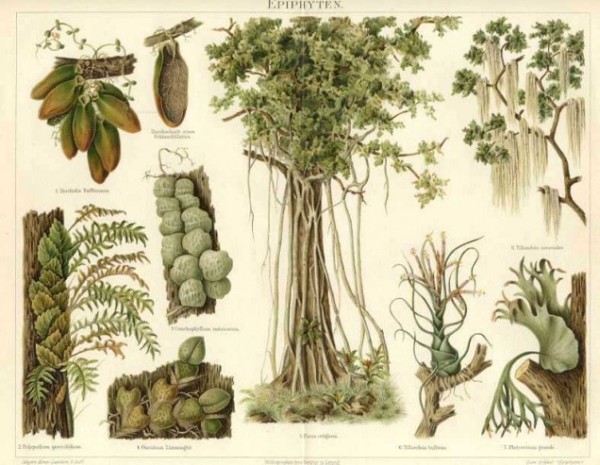What kind of times are these, when
To talk about trees is almost a crime
Because it implies silence about so many horrors?–Bertolt Brecht, “To those born later”
In order for me to write poetry that isn’t political
I must listen to the birds
and in order to hear the birds the warplanes must be silent.-–Marwan Makhoul
1. Introduction to the course: Fear & love in the Anthropocene
“People are most able to change their ways when they find two things in nature: something to fear… and also something to love.” (Jedediah Purdy, After Nature: A Politics for the Anthropocene, 2015).
2. Trees
Richard Powers, “Roots,” “Nicholas Hoel,” “Mimi Ma,” “Adam Appich,” “Douglas Pavlicek,” “Neelay Mehta” & “Patricia Westerford,” The Overstory, 2018, pp. 1-69 & 80-148.
Section A: Fear
3. Climate breakdown
David Wallace-Wells, “Part I: Cascades,” The Uninhabitable Earth: Life After Warming, 2019, pp. 8-37.
Peter Kalmus, “Chapter 5: Growth Always Ends,” Being the Change: Live Well and Spark a Climate Revolution, 2017, pp. 77-108.
“Cascading Systematic Risks,” Climate Change Risk Assessment 2021 Quiggin, et al.), Chatham House, The Royal Institute of International Affairs, 2021.
First Reformed, dir. Paul Schrader, 2017.
4. Mass extinction
W.S. Merwin, “The Last One,” “The Wave,” “The River of Bees,” “A Scale in May,” “The Mourner,” “The Asians Dying,” “For a Coming Extinction,” The Lice, 1967.
Ashley Dawson, Extinction: A Radical History, 2016.
Ripple WJ, Wolf C, Newsome TM, Galetti M, Alamgir M, Crist E, Mahmoud MI, Laurance WF (13 November 2017). “World Scientists’ Warning to Humanity: A Second Notice”. BioScience. 67 (12): 1026–1028.
UN Sustainable Development, “Nature’s Decline Unprecendented,” 2019.
5. Collapse
Margaret Atwood, The Year of the Flood, 2009, sections 1-23, pp. 7-125.
Jem Bendell, “Deep Adaptation: A Map for Navigating Climate Tragedy,” IFLAS Occasional Paper 2, 2018.
Alan Urban, “10 Reasons Why Our Civilization Will Soon Collapse,” 2023.
Section B: Love
6. Ecofeminism
Ursula K Le Guin, “The Author of the Acacia Seeds. And Other Extracts from the Journal of the Association of Therolinguistics” & “Sur,” The Compass Rose, 1974, pp. 6-15 & 234-50.
Val Plumwood, “Feminism and Ecofeminism,” Feminism and the Mastery of Nature, 1993, pp. 19-41.
Stacy Alaimo, “Chap 1: Bodily Natures,” Bodily Natures: Science, Environment, and the Material Self, Bloomington, Indiana: Indiana University Press, 2010, pp. 1-25.
7. Ecologies of mind
Mary Oliver, “Wild Geese,” “The River,” “Starfish,” “Orion,” “The Turtle,” “Sunrise,” “Landscape,” “At Loxahatchie,” Dream Work, 1986.
Vandana Shiva, “Monocultures of the Mind,” 1993.
Eduardo Kohn, “Introduction: Runa Puma,” How Forests Think: Towards an Anthropology Beyond the Human, 2013, pp. 1-25.
8. Amazonia: colonization, deforestation, shamanism & the commodity frontier
Jason W. Moore, “Sugar and the Expansion of the Early Modern World-Economy Commodity Frontiers, Ecological Transformation, and Industrialization,” 2000.
Kim Heacox, “The Amazon rainforest is losing 10,000 acres a day. Soon it will be too late,” The Guardian. 7 Oct 2021.
Michael Taussig, sections 1-9 & 37-41, Palma Africana, 2018. pp. 3-33 & 116-23.
Embrace of the Serpent, dir. Ciro Guerra, 2015.
9. Biophilia
Walt Whitman, “There was a child went forth every day“; “When Lilacs Last in the Door-yard Bloom’d“, Leaves of Grass, 1855.
Henry David Thoreau, “Economy” & “Where I lived and what I lived for,” Walden, 1854, pp. 6-82.
Edward O. Wilson, “Bernhardsdorp,” Biophilia, 1984, pp. 3-23.
10. Symbioses
Octavia Butler, “Bloodchild,” 1984.
Lynn Margulis, “Gaia,” The Symbiotic Planet: A New Look at Evolution, 1999, pp. 142-161.
Robin Wall Kimmerer, “Learning the Grammar of Animacy,” & “In the footsteps of the Nanabozho,” Braiding Sweetgrass, 2013, pp.60-71 & pp. 212-22.
11. Nature & psyche
Tommy Pico, Nature Poem, 2017.
Ralph Waldo Emerson, “Nature,” 1836.
Sarah Jaquette Ray, “Chap 1: Get Schooled on the Role of Emotions in Climate Justice Work,” A Field Guide to Climate Anxiety, 2020, pp. 18-29.
12. Eco-praxis
Edward Abbey, Chapters 1-15, The Monkey Wrench Gang, 1975, pp.1-123.
Andreas Malm, “Chap. 2: Breaking the Spell,” How to Blow Up a Pipeline, 2020, pp. 65-132.
Section C: Student projects
13. & 14. Collaborative final projects
Student tasks:
Contribute at least one idea each class: 30%
Presentation (10 minutes): 10%
Creative collaborative final project (in groups of about three students) (i.e. a report on engagement activities, local ecological situation, nature writing, etc.) (about 10 minutes per student): 10%
Final research paper: the recommended methodology for the final paper is to link analysis of one or more creative or literary text(s) with theoretical and/ or scientific ecocritical secondary materials in order to compose an original and creative critical thesis concerning one ecocritical issue, and the contribution of aesthetics to understanding this issue. If you wish to write a different kind of final paper that is also fine, but please consult with the class instructor (about 3000 words): 50%
